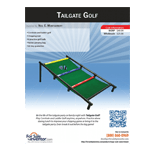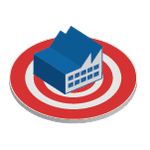Stake Your Claim & Get Patent Pending
Provisional Patent Application (PPA)
Establish your “First-to-File” priority filing date and stake your claim on your invention by officially declaring your invention as “Patent Pending.”
✔️ Prepared & Filed by Licensed Patent Pros
✔️“Fully Enabled” unlike DIY Filings that Expire Worthless
✔️An “Investment Grade Level” Suitable for Manufacturers

This is a good choice to get patent pending fast and affordably
Start your Provisional Patent today!
- No Cost, No obligation, Fully Protected, and 100% Safe
Saves you money over the high hourly rates of Patent Attorneys
Three Easy Steps

Submit Record of Invention
Complete Non-Disclosure Agreement to get your invention reviewed by experts free

Get FREE Review
Find out which patent (if any) is best for you and determine if a Patent Search is appropriate

Stake Your Claim
Make a no-obligation decision to get started on your invention with our team of patent pros
Provisional Patent Filing Timelines


TURBOCHARGE Your Invention with Our Marketing Packages

Full-color Brochure with QR Code
Brochure with QR Code for easy linking from smartphones

3D Renders and Virtual Prototype
We create 3D still renders and an animated 3D animation of your invention on youtube

Industry Targeting
Target 50 relevant companies for your invention w/ monthly updates

FSBI Website Listing
Single page on our website for 12 months. Share on social media!

Custom Logo Design
Create a customized logo to brand your invention with personality

Pro Website w/ Your Own Domain Name
Dazzling multi-page website for increased web presence
Why Choose For Sale By Inventor?
- Everything you need to patent, develop and sell your invention under one roof.
- Licensed patent attorneys on staff can help you overcome the legal hurdles with the USPTO.
- Staff Engineers can help you with your invention.
- Staff Artists can bring your invention to life.
Common Questions
A patent is a grant of property rights by the U.S Government through the U.S. Patent and Trademark Office. A patent grant excludes others from making, using, or selling the invention in the United States. The right conferred by the patent grant extends throughout the United States. However, a patent cannot be obtained on a mere idea or suggestion, but rather on the tangible manifestation of those ideas.
It is imperative for an inventor to understand that a patent cannot be granted if the invention was sold or publicly known anywhere in the world for more than one year, prior to filing for a patent. This is often referred to as the 1-Year-Rule. A patent also cannot be obtained on a mere idea or suggestion, but rather on the tangible manifestation of those ideas.
Patent applications are examined for both technical and legal merit. Prior to filing a patent application, a search of existing patents should be conducted.
The following list comprises the most common patents inventors file for: Provisional Application for a Patent (usually incorrectly referred to as a Provisional Patent), Utility Patent, Design Patent, and to a far lesser degree a Plant Patent.
First, a Provisional Application for a Patent is only a one-year filing which holds limited power, and can be utilized for certain cases. This filing is most often abused and misunderstood. The provisional patent application will be destroyed after one year unless the inventor takes precise steps to convert to a Utility Patent. Filing for a Provisional Patent may appear straightforward, but special care to maintain the priority rights as well as various other patent considerations should be strategized. More details regarding Provisional Patents below.
Second, a Utility Patent, which is the most common form of patent protection, protects the actual function of an invention. When an inventor receives a Utility Patent, they are granted a twenty-year term for a new, useful and non-obvious process, machine, composition of matter, article of manufacture, business method, or an eligible improvement thereof.
Third, a Design Patent protects the overall appearance, or decorative nature of the invention. The patent can be of value in protecting the aesthetics of new industrial designs, if used properly. A Design Patent is granted a fourteen-year protection for any new, original, and visible decorative design of an invention.
Lastly, a Plant Patent is a twenty-year grant for asexually reproduced assortments of distinct new plants, hybrids, and seedlings other than tuber-propagated or existing in an uncultivated state.
There is actually no such thing as a Provisional Patent. There is a Provisional Application for a Patent that an inventor can file that is never examined and will be abandoned after 1-year unless it is converted into a Utility Patent. Provisional Patent Applications may be recommended for certain inventors who want to perform market testing, to raise capital while finishing their invention, or to gather technical data. Conversely, if not filed correctly, inventors can easily be misled into believing that these are cost effective patents. If the product is being marketed during this 1-year timeframe, the inventor will lose all of the time and money it took to file the patent as well as any exclusive rights they had to their invention. Inventors should tread carefully when they are offered overhyped, inexpensive Provisional Patents online. In reality, Provisional Patent Applications will often cost far more in the long run. Remember… You always get what you pay for.
Additionally, to obtain patent rights when converting to a Utility Patent, the Provisional Patent Application must be sufficiently to take advantage of the early filing date. Essentially, somebody who is skilled in the field of your invention must be able to make your invention simply by reading your patent application. You can not simply make a claim that you can not substantiate, such as filing a provisional patent on a time machine, flying car, or a perpetual motion machine without supporting documentation on how these are made. Because many inventors are not completely aware of these requirements, many of these provisional applications are abandoned after 1 year wasting valuable time, money and energy.
In the same sense that an individual can defend themselves in a court of law, an individual is given the opportunity to write their own patent application without the assistance of a Patent Attorney or Patent Agent. Before one should endeavor to write their own Patent Application, they should consider the years of schooling required to become a patent attorney or agent. These individuals must have adequate scientific and technical backgrounds of education as well as pass the patent bar which has a high failure rate. Remember… A man who represents himself has a fool for a client.
Conducting a Patent Search with an Opinion of Patentability from a licensed patent practitioner is the best way to start to understand which patent, if any, is recommended for your invention idea. Please keep in mind that a practitioner may caution you from filing any patent on your idea. The reason for this is it may interfere with a current patent or products that are already known in public.



